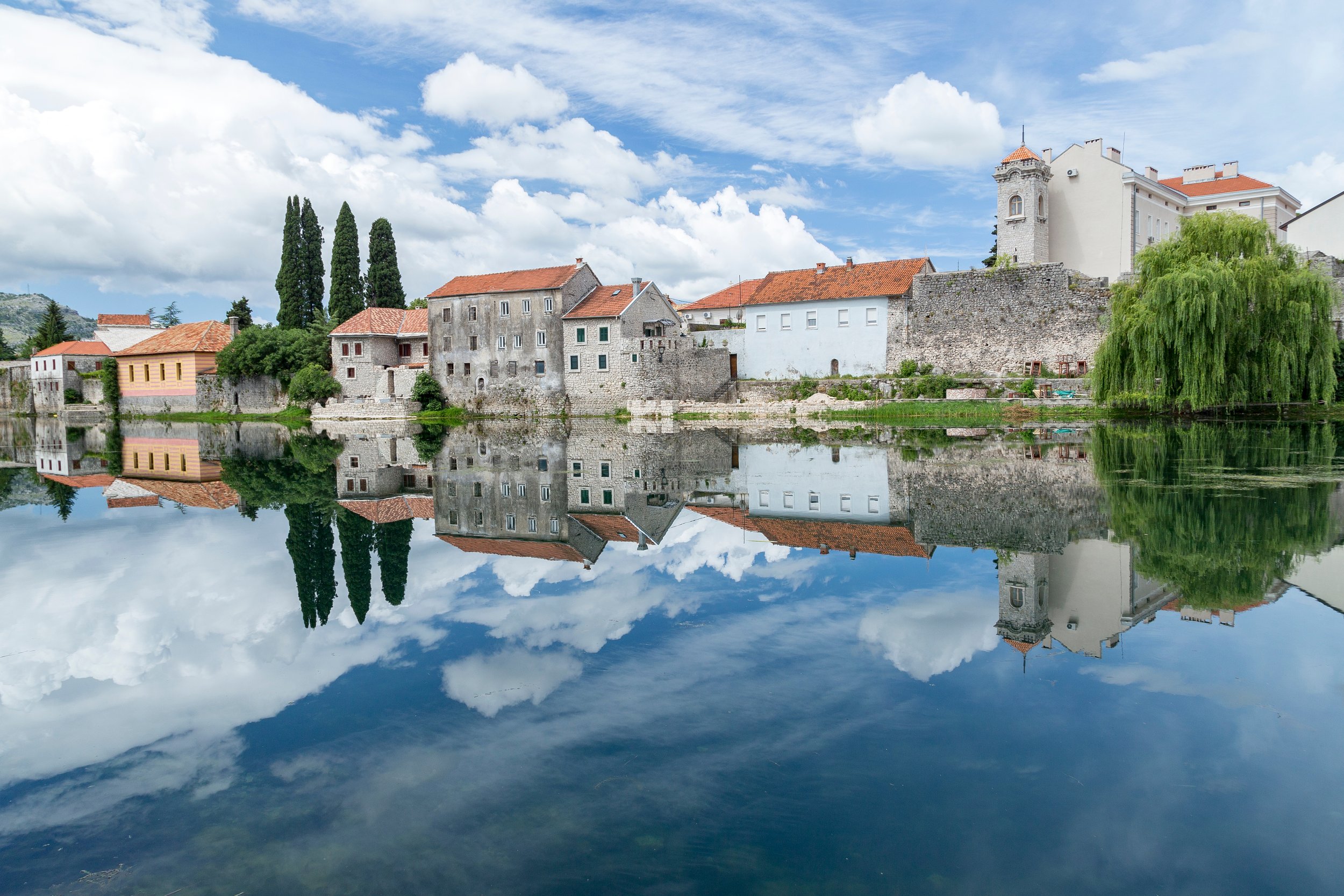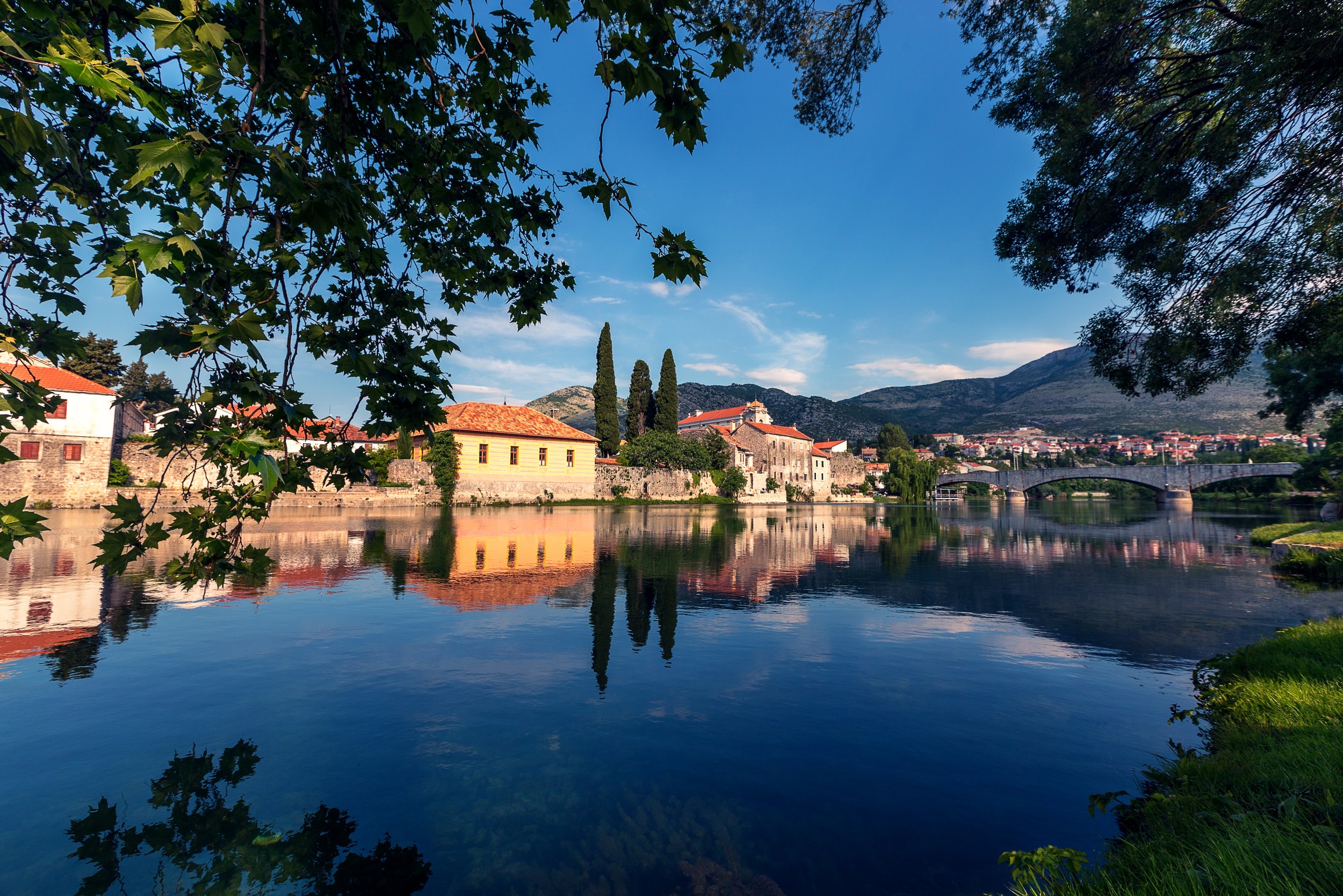Trebinje // The View From This Tower
Trebinje // © John Bills
Would it be fair to call it the most picturesque sight in Bosnia and Herzegovina? I don’t know about that. The existence of Počitelj might have something to say about that. The water wonders of Janjske Otoke and Japodski Otoki make a compelling argument. Heck, have you seen the waterfalls in Jajce, Štrbački Buk and Stolac? The wilds of Sutjeska and Kozara’s national parks? Crowning any one place as the most picturesque in a particular country is dangerous business, and I’ve no interest in dangerous business. Let’s keep things calm, buddy.
But, abandoning the points made in that first paragraph, it is difficult to argue against it, right? The two trees, striking skywards before blunting almost immediately, although not immediate enough to stop the pair from creating a bookend that frames the image perfectly. If the weather is good, you’ll get a reflection of the trees in the river too, and we all know that beauty is magnified when it is reflected. That’s a fact, by the way, a scientific fact, so don’t bother trying to argue.
A somewhat stumpy stone building is next to the trees, but don’t take the use of the word ‘stumpy’ to suggest anything other than gorgeous. Stone buildings are generally alluring things, but sticking them next to pine-green trees is “take all my money” territory. The windows of the extension also resemble a human face, shocked by what it has heard and unable to respond. You have to identify that before you clock it for the full effect, but it is what it is. A small archway leads to the courtyard or leads out to the terrace, depending on your approach, and the latter is prime laze the day away in front of the river territory.
A beaut // © Jovan Vidakovic // Shutterstock.com
The three stories and five rows of the next building are abandoned, I’m sure of it. The first two rows are burnt out, blackened by either flame or history’s willingness to forsake its architecture, or its architects, I can’t tell. Is there an architectural collection more celebrated yet more anonymous than the Balkan old town? Countless observes stop to wax lyrical about the beauty of the buildings, the poetry of the collective and the soul-comforting symmetry of it all. Nobody stops to ask who built the buildings. The Ottomans built these buildings, but the Ottoman population was in the 15 million range at the time. 15 million people didn’t build this, because there is no chance that 15 million people could come together to create something like this. 15 people couldn’t. I’m not going to say it was the work of one person, but you get the point.
The next three rows boast new windows, but the only value lies in their placing as a contrast to the burnt-out destruction of the blackened brothers. The windows are pleasingly out of sync with each other. Ruled by a free hand that should have gone home a couple of drinks ago.
And then two floors, two rows, empty windows, bare stone. A building that looks like a railway signal house. In the shadow of the new windows to the left, offering little but the simplicity of supposed symmetry. It isn’t symmetrical, but it is close enough to give the impression of being so.
An absolute beaut, must I repeat? // © novak.elcic // Shutterstock.com
A roofless building, five windows, a second ground floor and a little below. The Museum of Herzegovina juts out from its far flank, itself above an old wall blackened by time and graced by nature.
In front of it all sits the Trebišnjica, a forgotten river in the grand annals of this country’s waterways. It isn’t the Neretva, freezing and flowing by iconic bridges. It isn’t the Buna, magically escaping from the jaws of a sheer cliff face. It isn’t the Bosna, giving the country its international name. It isn’t the Sava, clinging to the rest of the region, it isn’t the Vrbas, powering through territory. It isn’t the Una, objectively the most beautiful river in this most beautiful country.
What it is, is the Trebišnjica, It used to be called the Arion, and it came and went as it saw fit, rising and sinking, flowing all the while. It gave us Bileća Lake, Yugoslavia’s biggest dam, and the view of Trebinje’s old town that might just be the most picturesque sight in Bosnia and Herzegovina. When the Stari Grad reflects into the water, it is difficult to argue otherwise.


